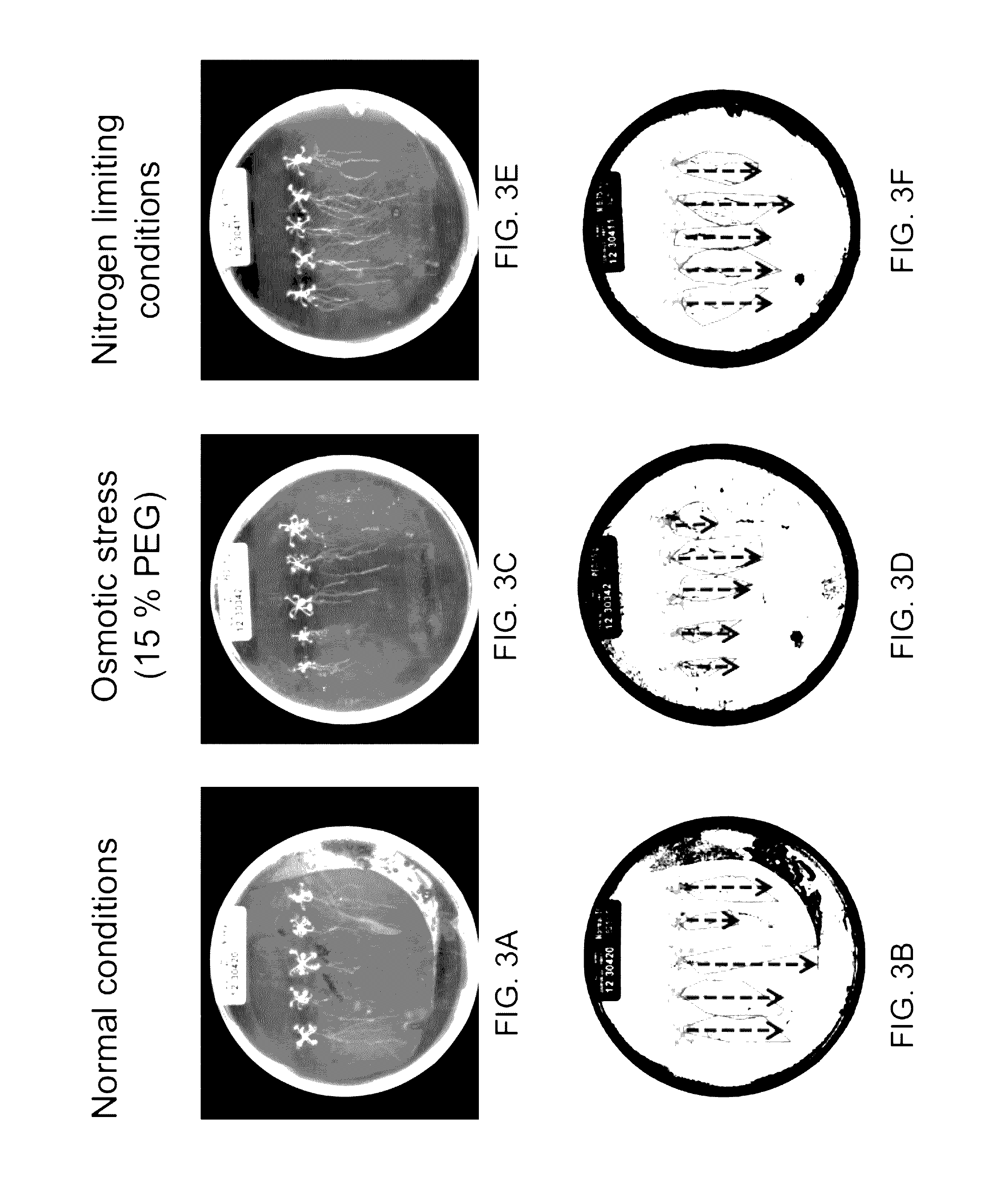Isolated polynucleotides and polypeptides and methods of using same for increasing plant yield, biomass, growth rate, vigor, oil content, abiotic stress tolerance of plants and nitrogen use efficiency
a technology which is applied in the field of isolated polypeptides and polypeptides, can solve the problems of profound effects on plant development, growth and yield of most crop plants, cell death and consequently yield loss, water deficit, etc., and achieves the effects of increasing biomass, abiotic stress tolerance, and/or nitrogen use efficiency of plants
- Summary
- Abstract
- Description
- Claims
- Application Information
AI Technical Summary
Benefits of technology
Problems solved by technology
Method used
Image
Examples
example 1
Identification of Genes and Predicted Role Using Bioinformatics Tools
[0316]The present inventors have identified polynucleotides which can increase plant yield, seed yield, oil yield, oil content, biomass, growth rate, fiber yield and / or quality, abiotic stress tolerance, nitrogen use efficiency and / or vigor of a plant, as follows.
[0317]The nucleotide sequence datasets used here were from publicly available databases or from sequences obtained using the Solexa technology (e.g. Barley and Sorghum). Sequence data from 100 different plant species was introduced into a single, to comprehensive database. Other information on gene expression, protein annotation, enzymes and pathways were also incorporated. Major databases used include:
[0318]Genomes
[0319]Arabidopsis genome [TAIR genome version 8 (Hypertext Transfer Protocol: / / World Wide Web (dot) arabidopsis (dot) org / )]; Rice genome [build 6.0 (Hypertext Transfer Protocol: / / http: / / rice (dot) plantbiology(dot)msu(dot)edu / index.shtml];
[0320...
example 2
Production of Arabidopsis Transcriptom and High Throughput Correlation Analysis of Yield, Biomass and / or Vigor Related Parameters Using 44K Arabidopsis Full Genome Oligonucleotide Micro-Array
[0353]To produce a high throughput correlation analysis, the present inventors utilized an Arabidopsis thaliana oligonucleotide micro-array, produced by Agilent Technologies [Hypertext Transfer Protocol: / / World Wide Web (dot) chem. (dot) agilent (dot) com / Scripts / PDS (dot) asp?lPage=50879]. The array oligonucleotide represents about 40,000 A. thaliana genes and transcripts designed based on data from the TIGR ATH1 v.5 database and Arabidopsis MPSS (University of Delaware) databases. To define correlations between the levels of RNA expression and yield, biomass components or vigor related parameters, various plant characteristics of 15 different Arabidopsis ecotypes were analyzed. Among them, nine ecotypes encompassing the observed variance were selected for RNA expression analysis. The correlati...
example 3
Production of Arabidopsis Transcriptom and High Throughput Correlation Analysis of Normal and Nitrogen Limiting Conditions Using 44K Arabidopsis Oligonucleotide Micro-Array
[0375]In order to produce a high throughput correlation analysis, the present inventors utilized an Arabidopsis oligonucleotide micro-array, produced by Agilent Technologies [Hypertext Transfer Protocol: / / World Wide Web (dot) chem (dot) agilent (dot) com / Scripts / PDS (dot) asp?lPage=50879]. The array oligonucleotide represents about to 44,000 Arabidopsis genes and transcripts. To define correlations between the levels of RNA expression with NUE, yield components or vigor related parameters various plant characteristics of 14 different Arabidopsis ecotypes were analyzed. Among them, ten ecotypes encompassing the observed variance were selected for RNA expression analysis. The correlation between the RNA levels and the characterized parameters was analyzed using Pearson correlation test.
[0376]Experimental Procedures
[...
PUM
| Property | Measurement | Unit |
|---|---|---|
| nucleic acid sequence | aaaaa | aaaaa |
| nucleic acid | aaaaa | aaaaa |
Abstract
Description
Claims
Application Information
 Login to View More
Login to View More - R&D
- Intellectual Property
- Life Sciences
- Materials
- Tech Scout
- Unparalleled Data Quality
- Higher Quality Content
- 60% Fewer Hallucinations
Browse by: Latest US Patents, China's latest patents, Technical Efficacy Thesaurus, Application Domain, Technology Topic, Popular Technical Reports.
© 2025 PatSnap. All rights reserved.Legal|Privacy policy|Modern Slavery Act Transparency Statement|Sitemap|About US| Contact US: help@patsnap.com



